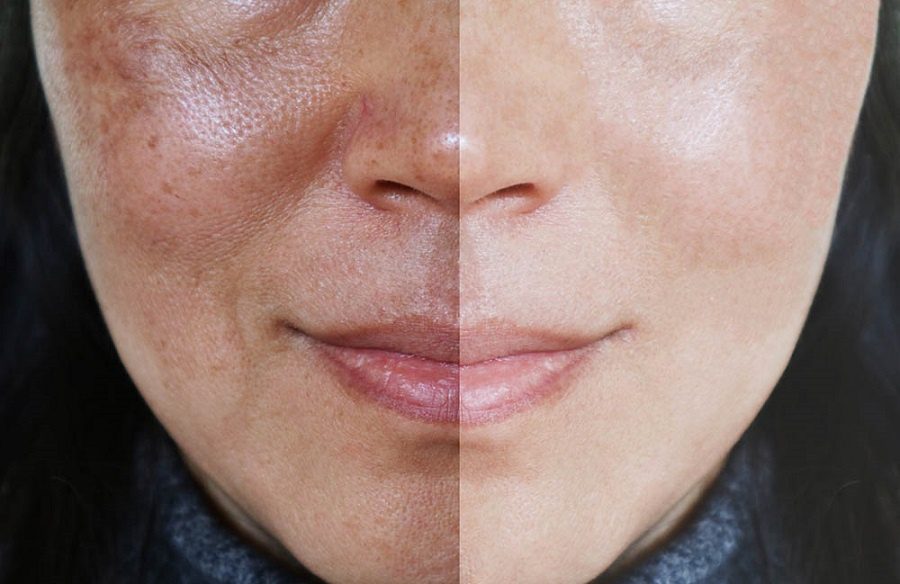Melasma is one of the most common skin problems that cause discolored, grey or dark colored patches on the skin.
The skin discolouration usually takes place on various areas of the face like the upper lip, cheeks, forehead and bridge of the nose.
This skin problem can occur on those parts of the body that get maximum sun’s exposure like forearms, shoulders and neck.
This skin problem may occur to anyone but it is commonly found in females lying in the age group of 20-50 years. Melasma is easy to treat with topical creams containing hydroquinone.
Common Symptoms of Melasma
Discolored patches on the skin are one of the most common symptoms of the skin condition.
These patches do not cause any pain or any physical harm but they look unappealing. These patches usually develop around central face, jawline and cheekbone.
It is important to notice these symptoms carefully and see a dermatologist on an immediate basis to get the right Melasma treatment at the right time.
Causes of Melasma
The exact cause of skin discoloration is unknown but it is believed that the skin problem takes place due to the malfunctioning of the color-making cells, melanocytes, in the skin.
Due to this fact, people with darker skin tones are more likely to get affected by the condition.
Some of the factors that may develop Melasma are:
- Excessive sun’s exposure
- Changes in hormones due to birth control pills or during pregnancy
- Using such face products that irritate a person’s skin
Types of Melasma
In melasma, four types of skin pigmentation patterns are observed: dermal, epidermal, mixed and one remains unnamed but commonly found in dark-colored individuals.
The epidermal is a condition in which excess melanin present in the superficial layer of the skin. The dermal melasma resembles with the presence of cells ingesting melanin throughout the dermis layer of the skin.
The mixed melasma includes both the dermal and epidermal type. The excess melanocytes in the skin of dark-skinned individuals depict the fourth type.
Method of Diagnosing Melasma
Many times, melasma looks like other skin conditions. So, to diagnose the condition carefully, a dermatologist may conduct a skin biopsy. For the biopsy, they remove a small bit of skin.
It is a small and quick procedure that gives a concrete idea of whether or not a person is suffering melasma. He may use a device known as Wood’s light to examine its penetration into the skin.
It is a special kind of light that examines any fungal and bacterial infection and determines how many layers of skin affected by the melasma.
Best Clinic for Melasma Treatment
Treatment is not necessary in all cases. For instance, if melasma develops due to hormonal changes caused during pregnancy or by taking birth control pills, the patches usually fade away with time or if a person stops taking the pills.
If the skin discoloration lasts for years, then it becomes necessary to look for its treatment.
There are a variety of ways to treat the skin condition but not all treatments show the desired results for everyone.
Moreover, there are chances that even after treating the condition successfully, melasma comes back after years. You should visit any recognized clinic for the treatment.
Some of the popular treatment options for Melasma are:
- Hydroquinone: Hydroquinone is a cream, lotion or gel and often regarded as a fine line of treatment of melasma.
The cream works by lightening the color of patches with time. It needs to apply directly to the discolored skin patches. It is an over the counter gel or cream.
- Corticosteroids and Tretinoin: Depending upon the skin condition, dermatologists recommend stronger creams like tretinoin and corticosteroids.
These medications are available in the forms of gels, lotions or cream and lighten the discolored skin patches.
Sometimes, the dermatologists at Clinic Dermatech recommend combination creams that contain Tretinoin, corticosteroids, and hydroquinone.
Advanced Treatment of Melasma:
If topical medications do not show the desired results, then a dermatologist recommends advanced procedures like:
- Dermabrasion
- Microdermabrasion
- Laser Treatment
- Chemical Peel
- Light Therapy
These treatments may seem out of reach but Clinic Dermatech offers these treatments at a pocket-friendly charge.
With the latest and medically advanced technology and machines, and expertly trained professionals doing the job, there is hardly any risk involved in the treatments.
Thus, it is necessary to speak to the experienced dermatologist of Clinic Dermatech and discuss your case with him in detail to know the right treatment of the condition.
Coping with Melasma
When no treatment shows the desired results, people often find difficult to cope with melasma. In such situations, people need to follow certain precautions to ensure that the discoloration does not get worse with the time.
These guidelines include using makeup for covering up the discolored skin, taking prescribed medications, avoiding sun exposure, wearing sunscreen with minimum SPF 30 and at least half an hour before stepping out in the sun and wearing a wide-brimmed hat that covers a face.
It is necessary to follow these guidelines if melasma clears completely to rule out the possibility of returning.

















Add Comment